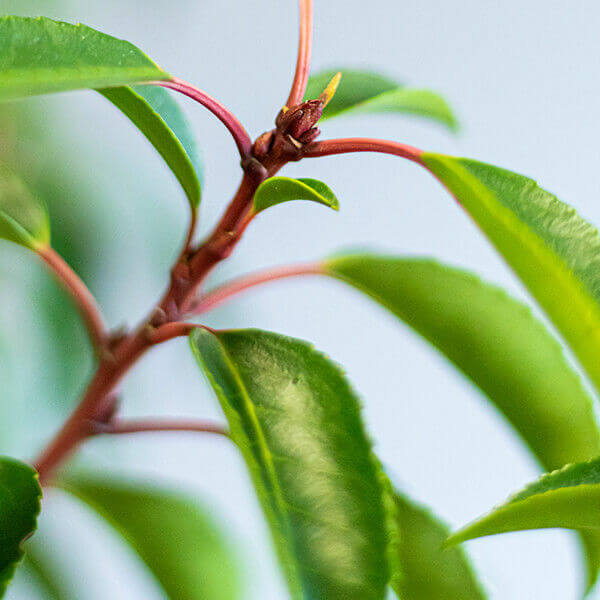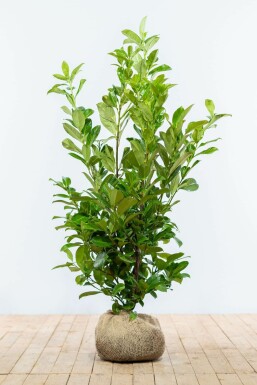Hedge Plants For Pathways
Improve your garden's appeal with lavish hedge varieties such as Yew (Taxus), Thuja, Laurel, Photinia, and Bamboo, commemorated for their structural stability and ecological advantages.
Yew and Thuja offer evergreen protection and winter season resilience, while Laurel provides rapid development and broad, aromatic leaves.
Photinia adds seasonal beauty with its vibrant red foliage, and Bamboo lends a low-maintenance, tranquil ambiance.
These hedges enhance air quality, reduce sound, and develop tranquil, private areas.
Correct planting, spacing, and maintenance make sure vigorous growth and eco-friendly harmony.
Explore how these rich ranges can raise your garden's beauty and well-being.
Secret Takeaways
Change Your Garden With Lush Hedge Ranges
- Select Yew for its dense, evergreen growth and exceptional durability.
- Choose Laurel for its quick development and broad leaves, ensuring fast privacy.
- Select Photinia for its dynamic seasonal foliage, which turns a striking dark red.
- Make use of Bamboo for a low-maintenance, winter-hardy hedge with visual appeal.
- Area plants 2-3 per meter and prune routinely for optimum development and health.
Popular Hedge Plants
When changing a garden with lush hedge varieties, it's necessary to think about popular hedge plants such as Yew, Thuja, Laurel, and Photinia due to their special characteristics and benefits.
Yew (Taxus) is extremely respected for its durability and thick, green development, making it a prime option for sustaining landscapes.
Thuja is kept in mind for its evergreen foliage and robust winter season durability.
Photinia adds seasonal vibrancy with red leaves that darken in time, producing dynamic visual appeal.
Laurel offers rapid development and aromatic, broad leaves, suitable for quick privacy.
In Addition, Bamboo is an exceptional option for ambiance, offering a low-maintenance, winter-hardy option that boosts the garden's visual with its sophisticated, swaying walking sticks.
These selections cater to a range of horticultural requirements and preferences.
Advantages of Garden Hedges
Garden hedges provide a wide range of benefits, making them an important addition to any landscape. These natural barriers are economical to implement and supply considerable wind protection, boosting air flow and adding to noise decrease. The dense foliage of hedges like Thuja and Beech ensures personal privacy by obstructing exposure, creating a remote and serene environment.
Hedges likewise play a crucial function in microclimate regulation, offering a stable environment that promotes plant development and reduces temperature level changes. Their detailed leaf structures filter contaminants, improving air quality and adding to a healthier garden community.
Additionally, hedges excel in noise decrease, soaking up and deflecting sound waves to lower ambient noise levels. This double functionality of offering both acoustic and visual privacy improves the general harmony and visual appeal of any garden.
Planting and Maintenance Tips
For a successful hedge, precise preparation of the planting location is vital. Ensure the soil has proper pH and drainage to support strong root advancement.
Area the plants properly for the picked types. Water the hedge frequently during its preliminary development stage, changing as required with seasonal modifications.
Carry out a systematic bug control and disease prevention strategy, using chemical or organic treatments when necessary. Regularly inspect for aphids, termites, and fungal infections.
Apply mulch to retain moisture and suppress weeds. Seasonal pruning promotes thick development and air blood circulation, necessary for plant health.
Following these standards will help you cultivate a dynamic, well-kept hedge that improves the charm of your garden.
Spacing and Trimming Guidelines
Spacing and Cutting Standards
Appropriate spacing and trimming are crucial for cultivating healthy, aesthetically appealing hedges. Sufficient spacing guarantees each plant receives adequate nutrients, light, and air flow.
Follow these standards for ideal hedge maintenance:
- Spacing: Position hedge plants 2-3 plants per meter to motivate robust development.
- Pruning Methods: Routine pruning is vital for preserving desired hedge height and shape. Cut new development in summertime and cut back older wood throughout winter.
- Seasonal Care: Change trimming schedules and methods according to seasonal requirements to guarantee plant health.
- Hedge Height: Routinely screen and cut to preserve the desired hedge height and accomplish consistent looks.
Abiding by these steps will ensure your hedge thrives, boosting both the appeal and functionality of your garden.
Picking the Right Hedge
Choosing the Right Hedge
Choosing the appropriate hedge involves examining factors such as fully grown height, foliage density, and ecological durability. Effective hedge plant choice needs understanding each species' development attributes and site-specific adaptability.
For example, Yew (Taxus) provides exceptional durability and dense growth, while Thuja is noteworthy for its winter season strength. Additionally, considering maintenance requirements is important; fast-growing types like Laurel or Privet need regular trimming, whereas low-maintenance alternatives like Bamboo or Ivy may be preferable for those seeking minimal upkeep.
Environmental elements such as soil type, light schedule, and wetness conditions should also guide the selection process. This careful approach ensures the chosen hedges will flourish, providing both functional and aesthetic benefits to the garden landscape.
Delivery and Planting Guidance
To ensure your hedge plants thrive, they need to be provided by specialized couriers and planted promptly upon arrival.
Follow these essential actions for effective planting:
- Soil Preparation: Enhance the soil with raw material to improve drain and nutrient material.
- Planting Depth: Create a trench twice the width and equal to the depth of the root ball.
- Watering Techniques: Water completely after planting, keeping the soil consistently moist however not filled.
- Mulching: Apply a layer of mulch to maintain wetness and suppress weeds.
Customer Assistance and Service
Given the crucial function of timely help in horticultural pursuits, our client support group is available six days a week through telephone, e-mail, and social networks to offer skilled guidance and swiftly resolve any concerns. Their devotion to quick action times guarantees consumer complete satisfaction by resolving questions related to plant health, optimum planting methods, and maintenance schedules.

-----------------
Within 48 hours
This comprehensive support group, enhanced by a stellar 9.3/ 10 client score, highlights our dedication to boosting the gardening experience for every client.
Often Asked Questions
For How Long Does It Consider Hedge Plants to Develop?
Hedge plants usually need one to 3 years to become completely established, with the exact duration differing by types and growing conditions.
Reliable care throughout this crucial period is important for robust growth. Constant watering, alert weed control, and suitable fertilizer application are critical in promoting strong root development.
For instance, fast-growing types like Laurel might develop quicker, while slower-growing ranges such as Yew might take longer. Diligent maintenance speeds up the facility procedure, resulting in healthy and thick hedges.
What Are the Finest Hedge Plants for Privacy?
The question of the best hedge plants for personal privacy includes assessing evergreen and deciduous options.
Evergreen hedges like Thuja, Laurel, and Cypress provide year-round protection, guaranteeing continuous personal privacy.
On the other hand, deciduous hedges such as Beech provide seasonal privacy, shedding leaves in cooler months.
Key maintenance pointers for personal privacy hedges include routine trimming, fertilizing in spring, and proper spacing-- typically 2 to 3 plants per meter.
In addition, consistent watering and thorough weed removal are crucial for promoting healthy, thick growth.
Can Hedge Plants Bring In Wildlife to My Garden?
Yes, hedge plants can draw in wildlife to your garden by providing vital benefits like shelter, food, and nesting websites, thus boosting local biodiversity. Yew, holly, and laurel are outstanding for bring in birds, while ivy supports a variety of pests.
However, it's essential to note that there are some disadvantages, such as increased upkeep to manage bugs and routine upkeep. Thoroughly selecting and preserving hedge ranges can help stabilize these disadvantages and advantages, ultimately promoting a sustainable and vibrant community in your garden.
Exist Any Flowering Hedge Plants Available?
Yes, there are flowering hedge plants offered that can improve the appeal of your garden.
For example, Elaeagnus, also referred to as Olive Willow, produces fragrant white flowers in the fall, including a touch of sophistication.
Photinia, another popular choice, showcases dynamic red leaves that develop into an abundant green, creating a dynamic visual impact throughout the seasons.
To make sure these plants grow, it's essential to practice correct pruning strategies and seasonal maintenance, such as trimming new growth in the summertime and cutting down in the winter season.
These procedures will assist maintain the health and aesthetic appeal of your flowering hedges.
How Do I Prevent Insects in My Hedge Plants?
To prevent insects in hedge plants, utilize natural insect control techniques and preserve appropriate hedge care. Present useful pests like ladybugs, which victimize damaging bugs, to produce a well balanced community.
Routinely examine your hedges for signs of infestation and immediately eliminate any affected parts to prevent the spread. Ensure the health of your hedges by using well balanced fertilizers and supplying sufficient water.
Use mulching to retain soil wetness and correct spacing to minimize plant stress and promote robust growth. These practices collectively assist in decreasing insect problems and maintaining a healthy hedge.
Conclusion
In essence, picking the ideal hedge varieties such as Yew, Thuja, and Laurel hedging plants can transform any garden into a tranquil sanctuary. These plants offer year-round greenery, boost visual appeal, and offer useful benefits like noise decrease and wind security.
Proper planting strategies, precise spacing, consistent watering, and seasonal cutting are important for optimal development.
Trustworthy delivery services and skilled consumer support make sure a seamless experience from purchase to planting, making it simpler than ever to raise your outdoor area.
Garden hedges offer a plethora of benefits, making them an important addition to any landscape. These natural barriers are affordable to execute and offer significant wind defense, enhancing air blood circulation and contributing to noise reduction. The dense foliage of hedges like Thuja and Beech ensures privacy by blocking visibility, developing a serene and secluded environment.

Pruning Techniques: Routine pruning is necessary for preserving desired hedge height and shape. Cut brand-new growth in summer and cut back older wood throughout winter.